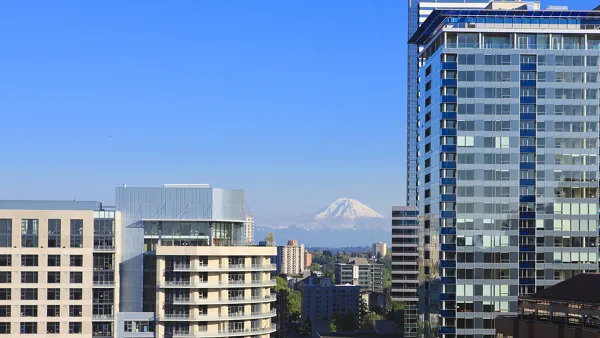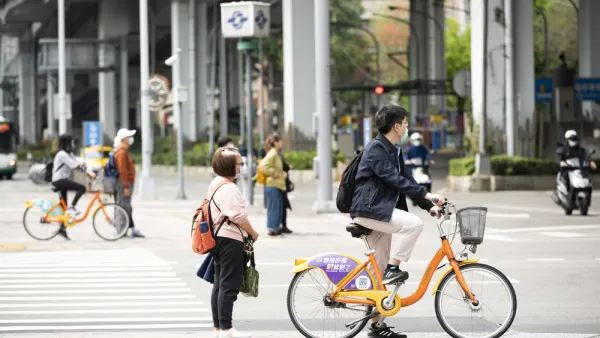The seven largest metros in the nation are teaming up to unify the technologies that are revolutionizing life in the city, Steve Towns reports.
Now more than ever, cities recognize the potential that technology has to transform the experience of daily life. From geographic analyses of crime to smartphone apps that show you where to park, these technologies are evolving at a rapid clip – thanks in large part to governments making data available to the public and letting them run with it.
But as with any new innovation, bleeding-edge developers splinter off into different directions, setting the stage for a sort of VHS-vs.-Betamax divide. But an alliance of the nation's seven largest cities, branded the G7, have been meeting since 2009 to make sense of the revolution. Now, they're preparing a formal project to bring their technological worlds into alignment.
"The unified database means applications developed for one G7 city should work for all," Towns writes. "The group also intends to hold multi-city hackathons that will target common problems and produce shared results" for all cities involved: Boston, Chicago, Los Angeles, New York, Philadelphia, San Francisco, and Seattle.
Jon Walton, Chief Information Officer of the City of San Francisco, notes the potential of making these tools widely available, and leaving the legwork to enterprising developers: "One of the things that surprised some of us was the number of applications that people rush to build once you make this data public. That's a real boon to the city because I don't have to spend taxpayer dollars to create them."
FULL STORY: Cities Share Data, Software Applications

National Parks Layoffs Will Cause Communities to Lose Billions
Thousands of essential park workers were laid off this week, just before the busy spring break season.

Retro-silient?: America’s First “Eco-burb,” The Woodlands Turns 50
A master-planned community north of Houston offers lessons on green infrastructure and resilient design, but falls short of its founder’s lofty affordability and walkability goals.

Delivering for America Plan Will Downgrade Mail Service in at Least 49.5 Percent of Zip Codes
Republican and Democrat lawmakers criticize the plan for its disproportionate negative impact on rural communities.

Test News Post 1
This is a summary

Test News Headline 46
Test for the image on the front page.

Balancing Bombs and Butterflies: How the National Guard Protects a Rare Species
The National Guard at Fort Indiantown Gap uses GIS technology and land management strategies to balance military training with conservation efforts, ensuring the survival of the rare eastern regal fritillary butterfly.
Urban Design for Planners 1: Software Tools
This six-course series explores essential urban design concepts using open source software and equips planners with the tools they need to participate fully in the urban design process.
Planning for Universal Design
Learn the tools for implementing Universal Design in planning regulations.
EMC Planning Group, Inc.
Planetizen
Planetizen
Mpact (formerly Rail~Volution)
Great Falls Development Authority, Inc.
HUDs Office of Policy Development and Research
NYU Wagner Graduate School of Public Service





























